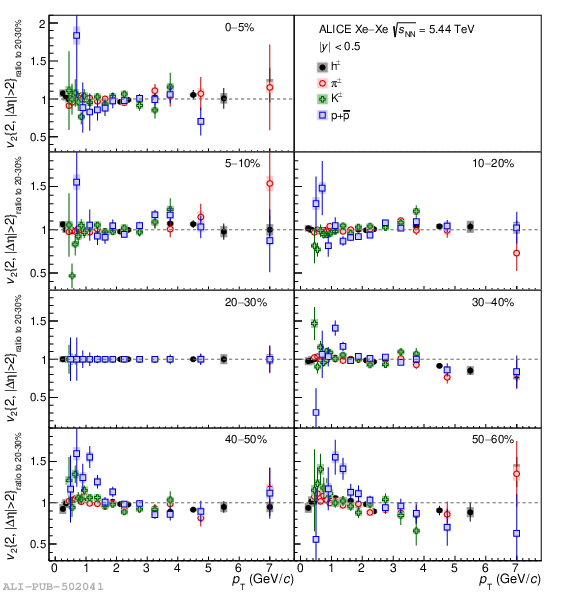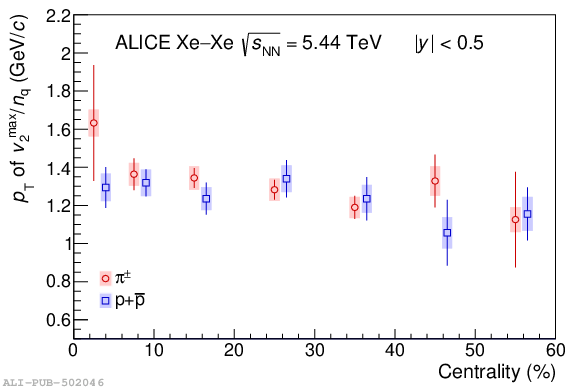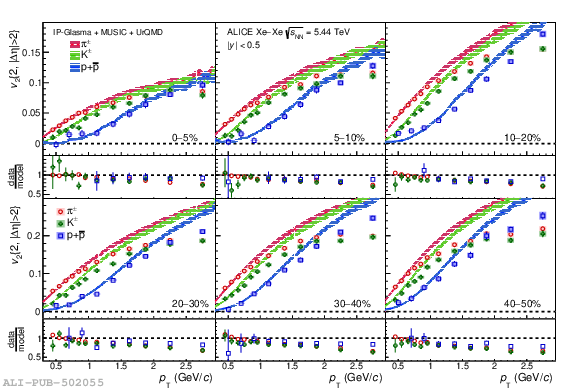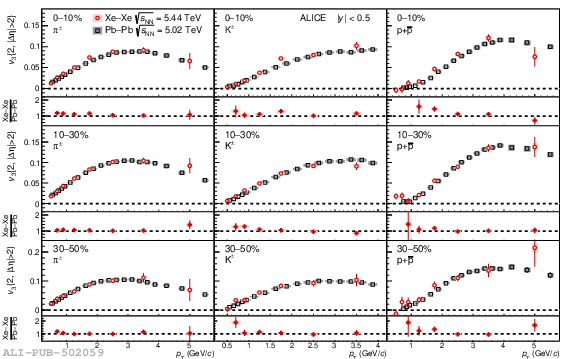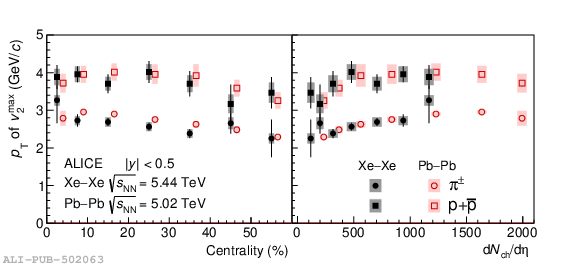Measurements of elliptic ($v_2$) and triangular ($v_3$) flow coefficients of $\pi^{\pm}$, K$^{\pm}$, p+$\rm \overline{p}$, K$^0_{\rm S}$, and $\Lambda + \overline{\Lambda}$ obtained with the scalar product method in Xe-Xe collisions at $\sqrt{s_{\rm NN}}$ = 5.44 TeV are presented. The results are obtained in the rapidity range $\left | y \right |<~0.5$ and reported as a function of transverse momentum, $p_{\rm T}$, for several collision centrality classes. The flow coefficients exhibit a particle mass dependence for $p_{\rm T}<~3$ GeV/$c$, while a grouping according to particle type (i.e., meson and baryon) is found at intermediate transverse momenta (3<~ $p_{\rm T}$ <~8 GeV/$c$). The magnitude of the baryon $v_{2}$ is larger than that of mesons up to $p_{\rm T}$ = 6 GeV/$c$. The centrality dependence of the shape evolution of the $p_{\rm T}$-differential $v_2$ is studied for the various hadron species. The $v_2$ coefficients of $\pi^{\pm}$, K$^{\pm}$, and p+$\rm \overline{p}$ are reproduced by MUSIC hydrodynamic calculations coupled to a hadronic cascade model (UrQMD) for $p_{\rm T} <~1$ GeV/$c$. A comparison with $v_{\rm n}$ measurements in the corresponding centrality intervals in Pb-Pb collisions at $\sqrt{s_{\rm NN}}$ = 5.02 TeV yields an enhanced $v_2$ in central collisions and diminished value in semicentral collisions.
JHEP 10 (2021) 152
HEP Data
e-Print: arXiv:2107.10592 | PDF | inSPIRE
CERN-EP-2021-149








